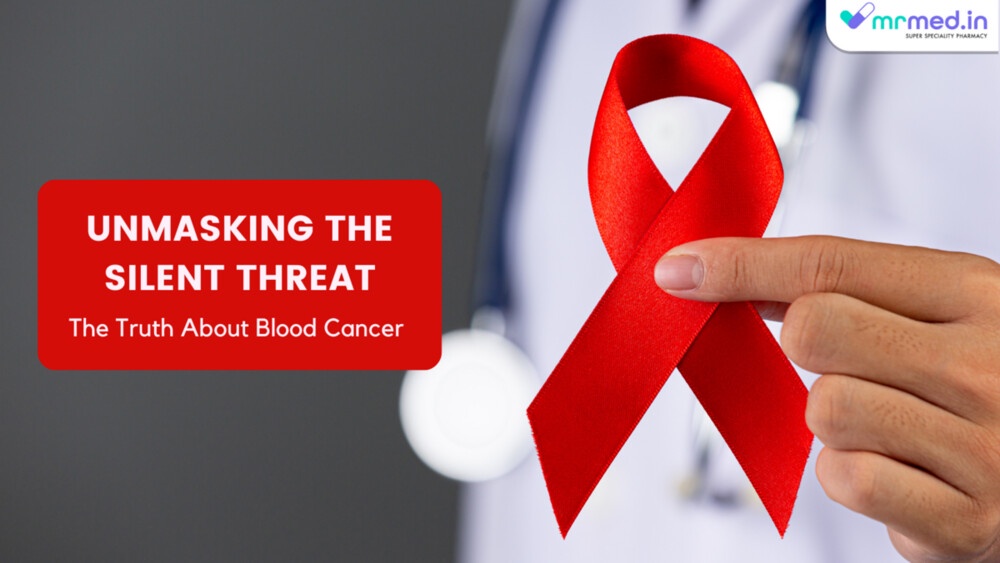Cancer refers to a group of diseases that are characterized by abnormal cell growth and division across the body. Blood cancer is a term that encompasses a group of diseases that affects blood cells, bone marrow, lymphatic system, and lymphoid tissues. Blood cancer alters the normal functioning of blood cells, including the supply of oxygen throughout the body, responsible for fighting against various infections and much more. There are various kinds of blood cancer classified based on the area being affected, which include leukemia, lymphoma, and myeloma, respectively. Let us unfold the blind behind blood cancer and spotlight Philadelphia chromosome-positive chronic myeloid leukemia.
What is Leukaemia?
Leukaemia is a collective term that includes many cancers affecting blood cells. It finds its root of origin in the bone marrow and is characterized by the abnormally rapid growth of white blood cells. Leukaemia is further classified based on the speed of cell progression and type of cell it is affected. It can be classified based on the following types which are given below:
- Acute lymphocytic leukemia
- Acute myelogenous leukemia
- Chronic lymphocytic leukemia
- Chronic myelogenous leukemia
The common symptoms of leukemia can range from fatigue, fever, pale skin, unexplained weight loss, and swollen lymph nodes, along with easy bruising and bleeding. Let us focus in detail on chronic myeloid leukemia.
Chronic Myeloid Leukemia
It is a kind of blood cancer that is revealed by the gradual slow development of cancerous cells in the bone marrow over a prolonged period of time. The symptoms can be the same as blood cancer, but it develops so gradually that it becomes less noticeable for individuals in the early stages; often, sometimes, it may be present even without symptoms.
Patients affected with chronic myeloid leukemia tend to develop an abnormal chromosome in their blood called the Philadelphia chromosome. It is a result of genetic abnormality that occurs specifically in CML patients. The fusion of two chromosomes called chromosome 9 and 22 in an abnormal manner results in the formation of a new fusion gene named BCR-ALB1.
Risk factors
- Age- Older individuals develop CML more than the young population.
- Sex- CML can occur more commonly in males than females
- Exposure to radiation- Prolonged exposure to diagnostic tools such as X-rays and CT scans can increase the risk of development of CML
Chronic myeloid leukemia occurs in three phases, namely,
- Chronic phase: It is the initial stage of CML and probably the longest phase. Patients who are in this phase rarely experience a symptom. There is an increased number of granulocytes developing, but the function of bone marrow is not compromised.
- Accelerated phase: The progression of the disease leads into the accelerated phase. Patients start to notice symptoms such as enlarged spleen and the function of bone marrow will be compromised. It is a sign that CML has progressed.
- Blast phase: It is the final advanced phase of CML, where there is a rapid development and spread of so-called blast cells. The bone marrow function is entirely compromised, and symptoms such as shortness of breath and bleeding intensify.
How to diagnose?
Chronic myeloid leukemia progresses even without exhibiting symptoms, it becomes crucial to diagnose the disease as early which becomes a key in the management of CML. Various diagnostic methods are employed in diagnosing the CML, such as,
- Complete blood count [CBC]
- Peripheral blood smear
- Bone marrow aspiration and biopsy
- Cytogenetic analysis
- Molecular testing
Therapeutic management of CML
Tyrosine kinase inhibitors are the gold standard first-line treatment option for chronic myeloid leukemia. They act by targeting the abnormal fusion gene of BCR-ABL1 and inhibit their activity, finally preventing the rapid growth of leukemia or so called blast cells.
Some of the commonly employed medications include Imatinib, dasatinib, bosutinib, and ponatinib. The newer second-generation TKIs include Tasigna, which contains an active ingredient, nilotinib.
Some alternative treatment options for patients include bone marrow transplantation, chemotherapy, and immunotherapy or a combination of any of these with an TKI medication therapy are effective in treating the CML
Conclusion
Despite being a serious condition, chronic myeloid leukemia has reached a stage where the disease is manageable, due to the treatment options available, including TKIs and the efforts of other clinical trials. Early detection and treatment options available have created a positive outlook for patients with chronic myeloid leukemia.


No comments yet